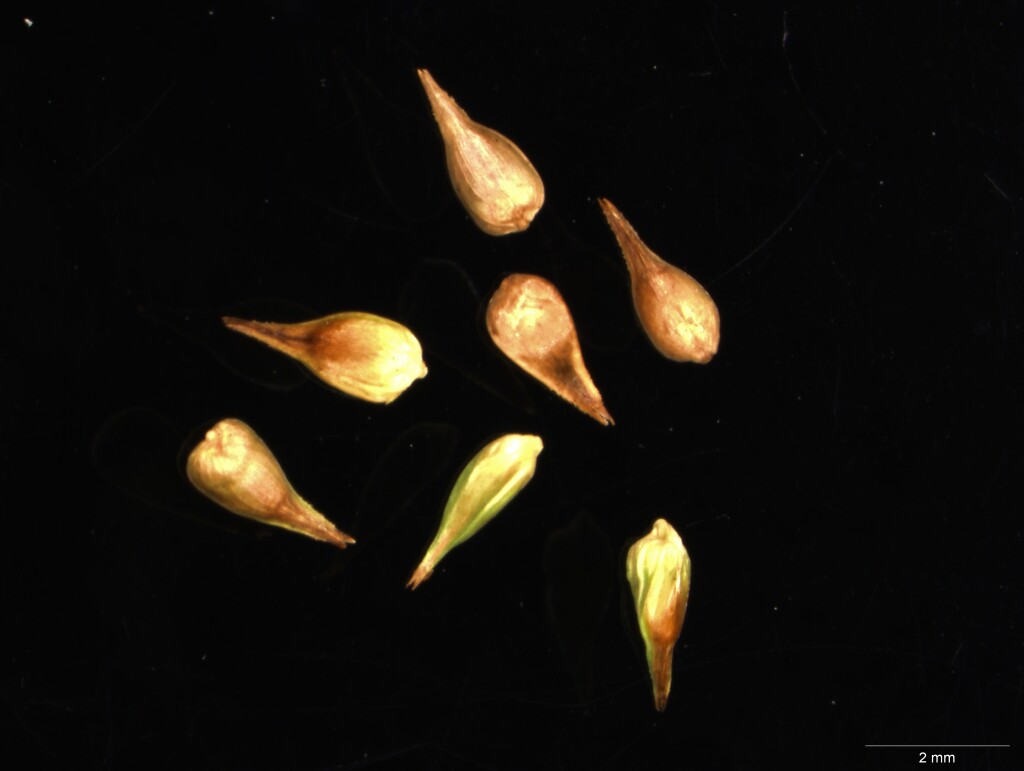Carex echinata
Murray Star SedgeRhizome very short; shoots densely tufted. Culms erect, trigonous to subterete, smooth or scarcely scaberulous just below the inflorescence, 4–30(–70) cm long, 0.5 mm diam. Leaves shorter than to exceeding culms, 0.5–1.5 mm wide, margins antrorsely scabrous; sheath pale brown; ligule rounded. Inflorescence small, narrow, erect, 1–3 cm long, with 3–5 spikes solitary at nodes; lowest involucral bract very short. Spikes sessile, ± distant, 0.3–0.7 cm long, each spike usually developing only a few utricles; uppermost spike with female flowers above male flowers; lower spikes female; glumes acute to obtuse, pale red-brown with green midrib and broad hyaline margins; female glumes 1.5–2.5 mm long; utricles 2.5–3.5 mm long, 1.0–1.5 mm diam., ovoid, ± falcate, with truncate thickened base, faintly nerved, hispid on upper margins, yellow-brown, spreading or strongly reflexed at maturity; beak prominent, c. 1 mm long, with apex bifid or notched; style 2-fid. Nut ovoid to broad-ellipsoid, lenticular, yellow-brown. Flowers summer.
EGU, HNF, VAlp. Also NSW. Native to New Guinea, New Zealand, Eurasia, North America. Confined to the higher alps (Bogong High Plains, Buckety Plain and Cobberas areas) where rather uncommon, occurring in wet valley-floor bogs and heaths.
Mature inflorescences with widely spreading utricles, forming star-shaped clusters, making this species easy to recognise.
Wilson, K.L. (1994). Cyperaceae. In: Walsh, N.G.; Entwisle, T.J., Flora of Victoria Vol. 2, Ferns and Allied Plants, Conifers and Monocotyledons, pp. 238–356. Inkata Press, Melbourne.
 Spinning
Spinning

